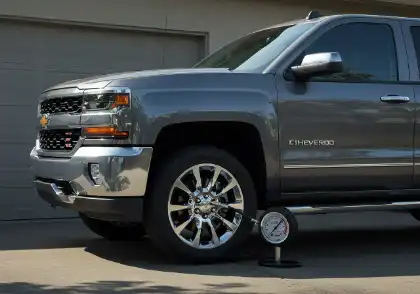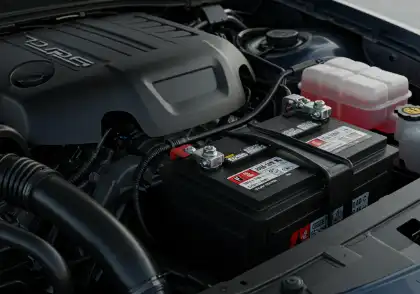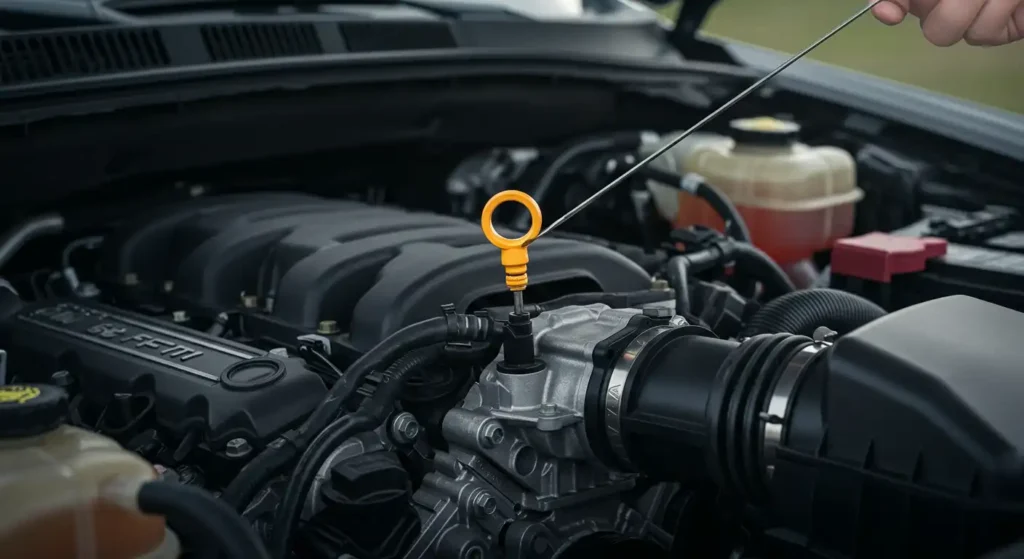Maintaining a used car is crucial for its longevity and safety. This article provides essential maintenance tips for your used car, offering practical advice and actionable steps. By following these tips, you can keep your vehicle running smoothly, ensure your safety on the road, and potentially save money on costly repairs.
In this article, you will learn about:
- Routine Maintenance: Understand the significance of regular check-ups and fluid changes.
- Tire Care: Learn how to maintain tire pressure and rotate tires properly.
- Fluid Levels: Monitor critical fluids such as power steering and brake fluid.
- Battery Care: Identify signs of a failing battery and learn how to maintain it.
- Brake System: Recognize unusual noises indicating brake issues.
- Air Filter Maintenance: Keep the air filter clean for optimal engine performance.
These essential maintenance tips empower you to take proactive measures in car care for used vehicles, ensuring reliability and enhancing your driving experience.
1. Routine Maintenance for Your Used Car
Routine car maintenance is the cornerstone of keeping your used vehicle running smoothly. Sticking to a regular maintenance schedule ensures every part of your car operates as intended.
Checking and Changing Engine Oil Regularly
Regular oil changes are essential. You need to check the oil level using the dipstick, ensuring it’s within the recommended range. Change the oil every 3,000 to 5,000 miles or as per your vehicle’s manual. This helps maintain engine lubrication and prevents overheating.
Replacing Transmission Fluid, Brake Fluid, and Coolant
These fluids are vital for your car’s performance:
- Transmission Fluid: Check the transmission fluid while the engine is warm and running. It should be at the correct level and color (usually red). Replace it every 30,000 to 60,000 miles.
- Brake Fluid: Low brake fluid can lead to brake failure. Inspect its level regularly and ensure it’s replaced every two years or as recommended by your manufacturer.
- Coolant: The coolant prevents engine overheating. Check its level in the reservoir when the engine is cool. Replace it typically every 30,000 miles or according to your car’s manual.
Regularly following this fluid replacement schedule not only keeps your car in peak condition but also extends its lifespan significantly.
2. Tire Care and Safety
Proper tire maintenance is essential for vehicle safety and performance. Keeping your tires in good condition can help prevent accidents and improve fuel efficiency.
Checking Tire Pressure

- Regularly check tire pressure using a reliable gauge.
- Refer to your car manual for the recommended pressure levels.
- Inflate your tires to the specified pressure to avoid issues such as poor handling, increased wear, and reduced fuel economy.
Rotating Tires
Rotating your tires helps to distribute wear evenly across all four tires.
- Follow your car’s manual for the recommended rotation schedule.
- Typically, you should rotate your tires every 6,000 to 8,000 miles.
- This practice extends the lifespan of your tires and ensures balanced traction on all wheels.
By maintaining proper tire care through regular pressure checks and rotations, you’ll enhance both safety and performance on the road.
3. Monitoring and Maintaining Fluid Levels
Maintaining the correct fluid levels in your used car is essential for its longevity and safety. Besides engine oil and coolant, several other critical fluids require regular monitoring.
Critical Fluids to Monitor:
- Power Steering Fluid
- Brake Fluid
- Transmission Fluid
- Windshield Washer Fluid
Steps to Check Power Steering Fluid
- Locate the power steering reservoir under the hood.
- Clean the area around the cap to prevent contamination.
- Remove the cap and check the fluid level against the marked indicators on the dipstick or reservoir.
- If low, add the recommended type of power steering fluid until it reaches the proper level.
Importance of Maintaining Brake Fluid
Brake fluid is crucial for safe braking performance. Low or contaminated brake fluid can lead to brake failure.
- Regularly check brake fluid levels by locating the brake fluid reservoir.
- Ensure it’s between the “MIN” and “MAX” marks.
- If necessary, add brake fluid specified in your car’s manual.
- Look out for any discoloration or debris, indicating a need for a complete brake fluid flush.
Routine checks of these fluids ensure your used car remains reliable and safe on the road.
4. Battery Care for Reliable Starts

Ensuring your car battery is in good condition is essential for reliable starts and overall vehicle performance. Recognizing the signs of a failing battery can help you avoid inconvenient breakdowns.
Signs of a Failing Battery:
- Slow engine crank: If you notice the engine cranks slowly when starting, this could indicate a weak battery.
- Dim lights: Headlights and interior lights that appear dimmer than usual might be a sign of insufficient battery power.
- Warning light: Many vehicles have a dashboard warning light that illuminates when there’s an issue with the battery or charging system.
- Corrosion on terminals: Visible corrosion around the battery terminals can hinder electrical connections and reduce battery efficiency.
How to Clean Battery Terminals Safely and Effectively:
- Gather Supplies: You’ll need gloves, safety goggles, a wire brush, baking soda, water, and a wrench.
- Safety First: Ensure the car is turned off, and wear gloves and goggles to protect yourself from harmful chemicals.
- Disconnect the Battery: Start by removing the negative terminal (black) first, followed by the positive terminal (red).
- Clean Terminals: Mix baking soda with water to create a paste. Apply it to the terminals using a wire brush to scrub away any corrosion.
- Rinse and Dry: After cleaning, rinse the terminals with water and dry them thoroughly with a clean cloth.
- Reconnect the Battery: Reattach the positive terminal first, followed by the negative terminal.
Regularly inspecting and maintaining your car’s battery ensures dependable starts and prolongs its lifespan. This simple yet crucial task helps prevent unexpected issues down the road.
5. Brake System Inspection and Upkeep

Maintaining the brake system is essential for vehicle safety, especially in used cars. Brakes are crucial as they are directly responsible for stopping your car effectively, preventing accidents, and ensuring a safe driving experience.
Brake Inspection Tips:
- Listen for Unusual Noises: If you hear squeaking, grinding, or squealing noises when you apply the brakes, it may indicate that your brake pads are worn out or there is an issue with the brake components.
- Feel for Vibrations: A vibrating brake pedal can be a sign of warped rotors or uneven wear on the brake pads.
- Check Brake Pad Thickness: Regularly inspect the thickness of your brake pads. If they are less than 1/4 inch thick, consider replacing them to maintain optimal braking performance.
- Monitor Brake Fluid Levels: Ensure that the brake fluid is at the recommended level and free from contaminants. Low or dirty brake fluid can affect braking efficiency.
Steps to Identify Brake Issues:
- Visual Inspection: Look for any visible signs of wear on the brake pads and rotors.
- Test Drive: Pay attention to how your car responds when braking during a test drive.
- Consult a Professional: If you notice any issues or are unsure about the condition of your brakes, consult a professional mechanic.
Prioritizing these inspection tips ensures that your brakes remain reliable and effective, contributing to the overall safety of your used car.
6. Maintaining the Air Filter for Optimal Performance
A clean air filter is essential for your used car’s engine to breathe properly. Dirty or clogged filters restrict airflow, causing the engine to work harder and reducing efficiency. Routine air filter maintenance leads to noticeable engine performance improvement and keeps fuel consumption in check.
Why Air Filter Maintenance Matters:
- Protects Engine Components: The air filter traps dust, debris, and contaminants before they reach the engine. If neglected, abrasive particles can enter the engine, accelerating wear and leading to costly repairs.
- Maintains Engine Efficiency: Restricted airflow from a clogged filter disrupts the fuel-air mix, leading to rough idling, hesitation when accelerating, or even engine misfires.
How a Clogged Air Filter Impacts Your Used Car:
- Reduced Power: An overworked engine with limited airflow may feel sluggish or less responsive.
- Increased Fuel Consumption: The engine compensates for poor airflow by burning more fuel, which quickly adds up at the pump.
- Emission Issues: Dirty filters can lead to incomplete combustion, increasing emissions, and possibly causing your car to fail emissions tests.
Regularly inspect your air filter—most manufacturers recommend checking it every 12,000 to 15,000 miles. If you drive in dusty areas or heavy traffic, you might need more frequent replacements. Swapping out a dirty air filter is a quick and inexpensive step that directly supports all other essential maintenance tips for your used car. Neglecting this simple task can have severe consequences, as not replacing the engine air filter can be detrimental to your vehicle’s performance.
Conclusion
Regular attention to maintenance tasks forms the backbone of any reliable used car care routine. Adopting these essential maintenance tips for your used car plays a direct role in vehicle longevity and daily safety on the road. Every oil change, tire rotation, and fluid check helps prevent costly repairs and unexpected breakdowns.
- Prioritize following your manufacturer’s guidelines. These schedules are designed with your specific make and model in mind, offering tailored recommendations for intervals and procedures.
- Consult trusted automotive professionals when unsure. Routine inspections by an experienced mechanic can catch early warning signs you might miss.
Consistency is key—investing time now secures peace of mind and performance in the future.
Applying these used car longevity tips keeps your vehicle dependable mile after mile. A well-maintained car doesn’t just get you from point A to point B—it does so safely, efficiently, and with fewer surprises along the way.

